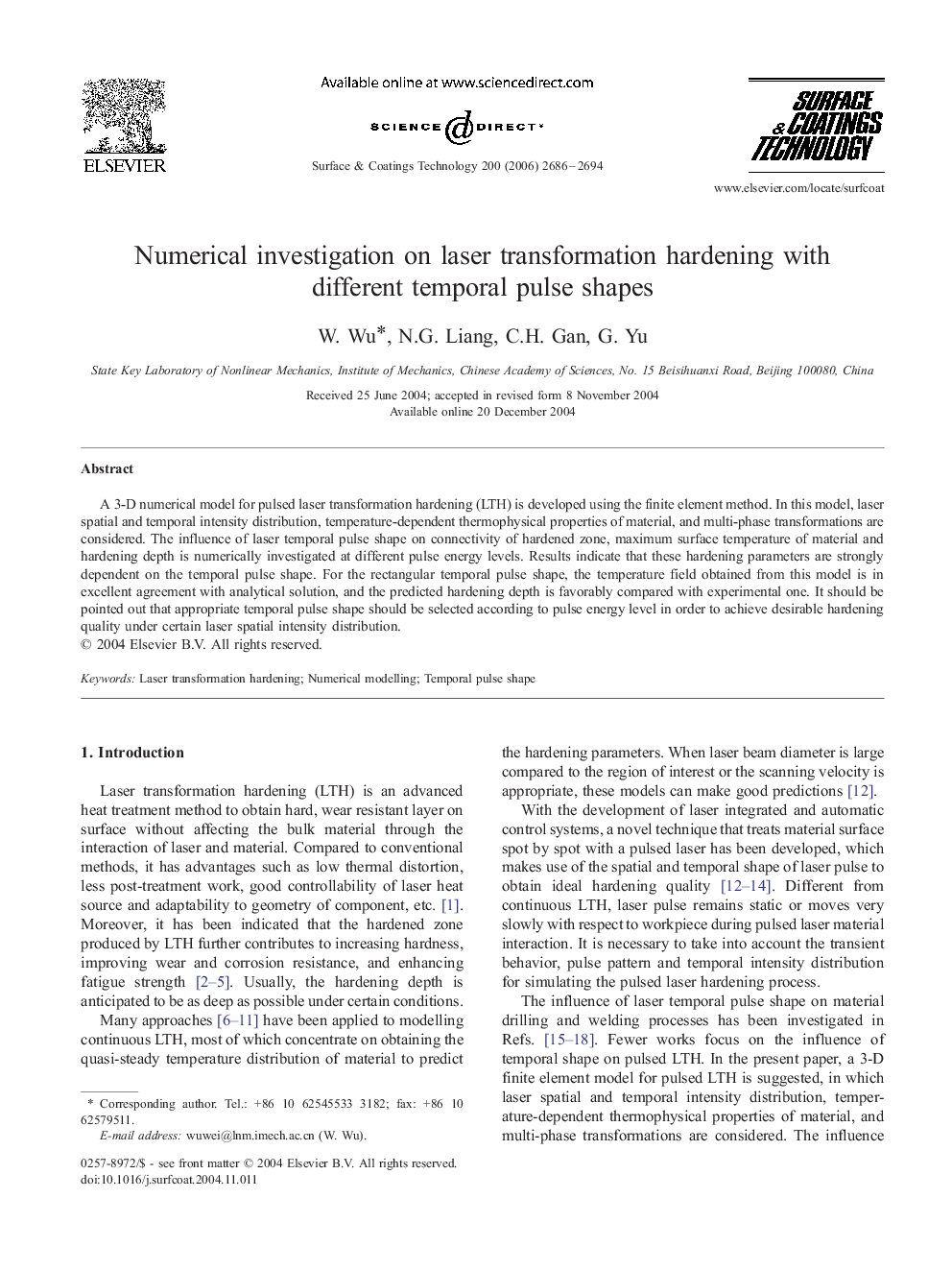| Article ID | Journal | Published Year | Pages | File Type |
|---|---|---|---|---|
| 1662859 | Surface and Coatings Technology | 2006 | 9 Pages |
A 3-D numerical model for pulsed laser transformation hardening (LTH) is developed using the finite element method. In this model, laser spatial and temporal intensity distribution, temperature-dependent thermophysical properties of material, and multi-phase transformations are considered. The influence of laser temporal pulse shape on connectivity of hardened zone, maximum surface temperature of material and hardening depth is numerically investigated at different pulse energy levels. Results indicate that these hardening parameters are strongly dependent on the temporal pulse shape. For the rectangular temporal pulse shape, the temperature field obtained from this model is in excellent agreement with analytical solution, and the predicted hardening depth is favorably compared with experimental one. It should be pointed out that appropriate temporal pulse shape should be selected according to pulse energy level in order to achieve desirable hardening quality under certain laser spatial intensity distribution.
